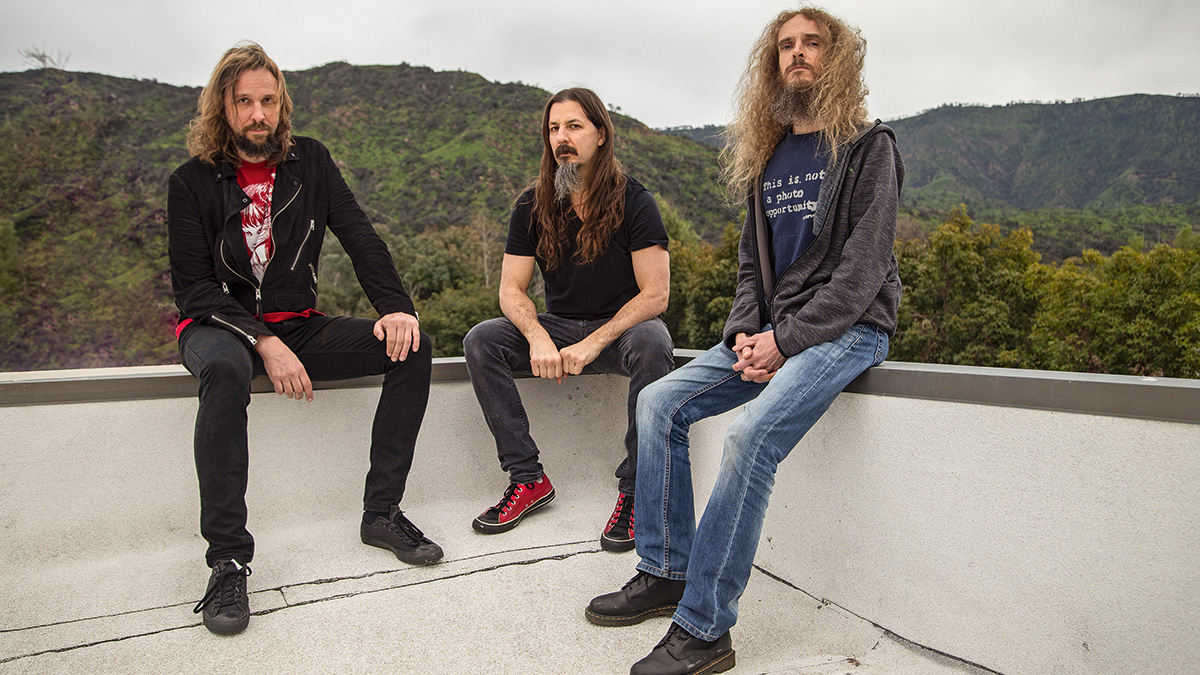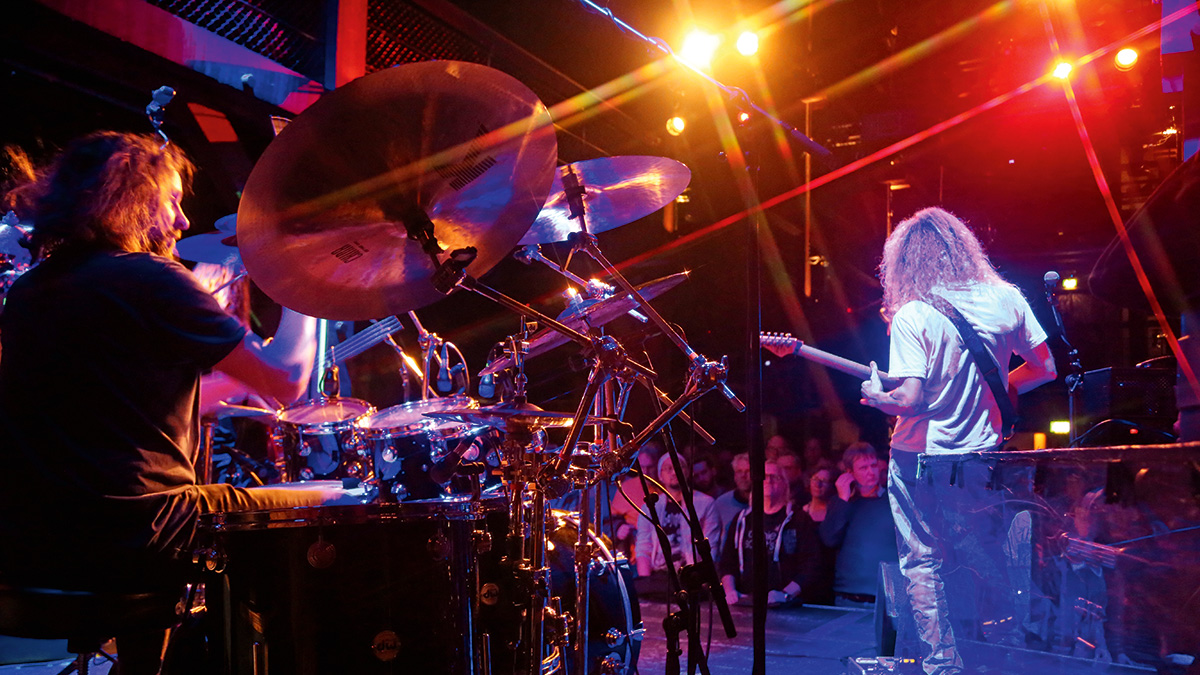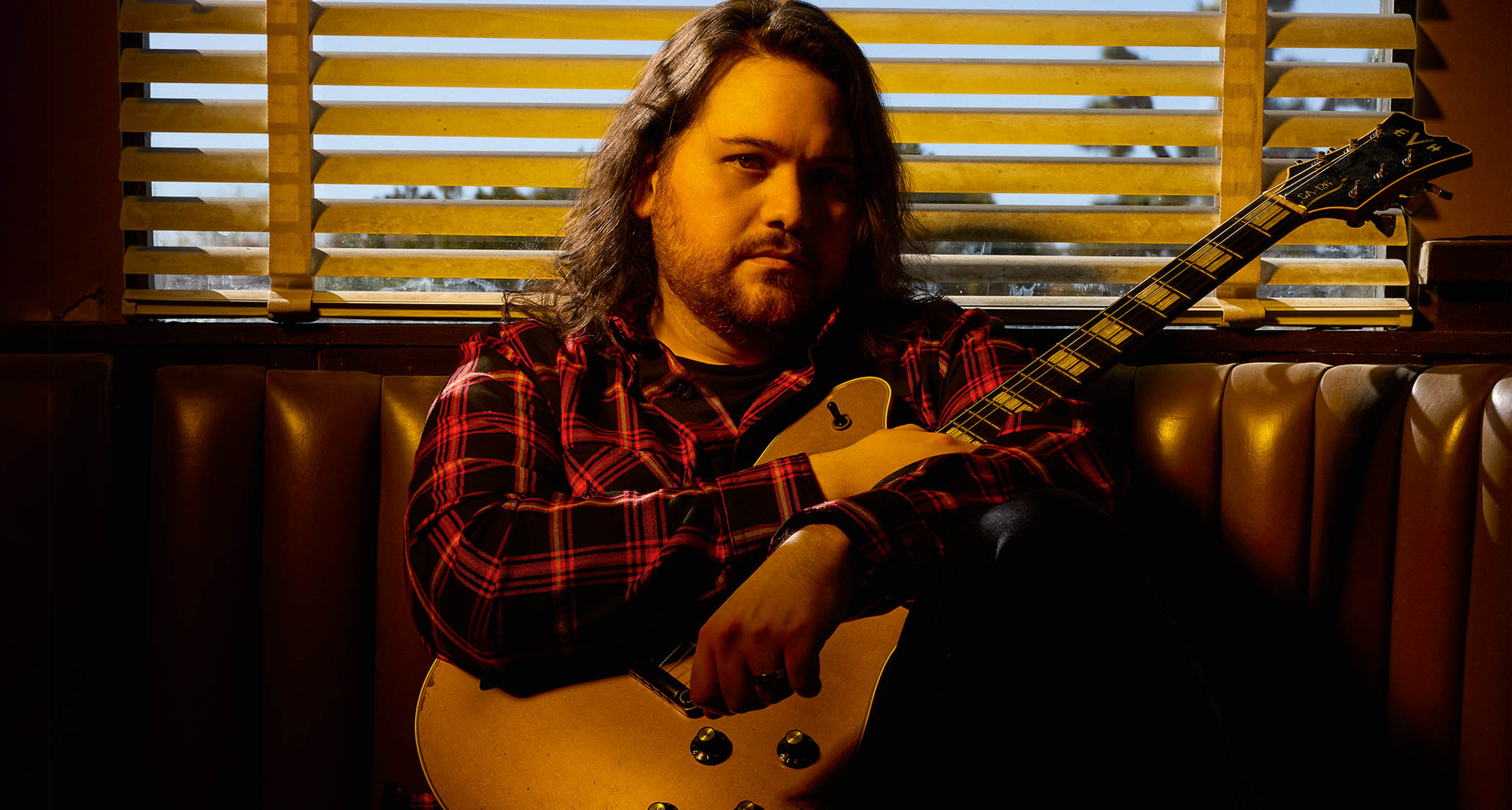Guthrie Govan: “You need to learn to enjoy the sound of a scale before you have any hope of using it effectively, in the same way you have to learn to like whiskey”
With his instrumental power trio The Aristocrats sounding more 3D than ever on new release with the Primuz Chamber Orchestra, Govan checks in to reflect on his career so far

Chances are, if you’ve ever been stood anywhere remotely near a discussion about the greatest guitar players on earth, you’ll have heard the name Guthrie Govan.
Though he would never describe himself in that way, the English fusion wizard is widely regarded as not only one of the most technically sophisticated players to emerge since the likes of Shawn Lane and Allan Holdsworth, but also one of the most tasteful, with a sense of melodic phrasing that’s just as dynamically exquisite as Larry Carlton or even Jeff Beck himself.
His 2006 solo debut Erotic Cakes raised the bar for instrumental guitar music, arguably becoming the most important solo album for shredders since Steve Vai’s game-changing Passion And Warfare masterpiece of 1990.
Pushing six-string boundaries is something he continues to do in The Aristocrats, who have released a handful of highly acclaimed studio and live albums since forming just over a decade ago – including their latest collaboration with the Primuz Chamber Orchestra.
That alone would be enough to make for a remarkably impressive resume, but the Chelmsford-born 50 year-old has plenty more in his list of achievements – from briefly joining progressive rockers Asia early on to eventually backing UK grime hero Dizzee Rascal, later recording and touring with progressive rock mastermind Steven Wilson and, in more recent years, performing in composer Hans Zimmer’s live band.
Then there’s his work as a guitar instructor, which has included stints at various music colleges, articles and transcriptions for magazines and a host of breathtaking video lessons/performances for companies like Lick Library and JTC. It's fair to say his life would have been very different without those stringed blocks of wood we all know and love...
“They tell me I was three years old when I started,” says Govan, talking to Total Guitar in between arena dates with Hans Zimmer and an ever-so-slightly more intimate session spot with Polish pianist Tomasz Bura at London’s Jazz Cafe.
All the latest guitar news, interviews, lessons, reviews, deals and more, direct to your inbox!
“Early on I was just trying to achieve this impossible feat that I saw my dad doing, which was getting through an Elvis song! It quickly became clear to me that the guitar is a typewriter, it’s a machine you use to make music.

“My instincts led me towards trying to copy anything I heard, rather than just guitar stuff. So anything from a TV theme to a Christmas carol at school was fair game. We all hear technical music in everyday life – you might turn on the TV and hear some virtuosic violin thing or a jazz piano or a bluegrass player burning on a banjo. I always felt if things like that were possible, why not try to do them?
“That came full-circle when I was 13 and I fell in with the metal crowd at school,” continues Govan, who by this point had started to become “microscopic” about the various barriers he perceived in his own playing. “Suddenly over the course of a week, I knew who Steve Vai and Tony MacAlpine were. I realized people had already been taking the guitar to its limits and I started homing in on their styles.”
They probably had a big impact on the player who ended up writing the Erotic Cakes material.

There was one track on the solo debut that had already been gaining traction within the guitar community – a piece called Wonderful Slippery Thing, which had won him the Guitarist Of The Year award in 1993.
The song had been specifically composed for the UK competition and, in amongst its smorgasbord of sizzling fusion licks and earworm melodies, featured a Dmaj7 string-skipping/tapping run that became a big talking point in his career early on.
“I guess my 21 year-old brain was thinking about how many cool guitar things I could cram into three minutes without compromising the musicality,” remembers Govan. “I remember deciding to put that fast ultra legato lick in there and thinking, ‘Okay, I like the sound of all this stretchy tapping stuff and the bubbly texture that it creates!’
“I thought about how efficiently I could get that idea across. Maybe 1.3 seconds would be enough time – something extreme and startling but also in context, so it didn’t become the point of the piece.”

Other tracks like Waves were indicative of a musician searching for new things that had never been done on guitar, snaking around the fretboard in ways few would ever dare.
“That song didn’t start with me saying, ‘Let’s write some callisthenic thing that will clean my neck for me!’” smiles Govan. “It was mainly me hearing a contour in my head thinking ‘This is clearly a synth melody, I wonder if it’s possible to make a guitar do that!’ It’s nice that people found something in that song. Some of them like to learn the melody, film themselves and put it onto Instagram. I’m flattered that it’s a party piece.”
One defining element of Govan’s playing that’s pretty much encompassed all of his recordings to date is his extensive usage of chromaticism and outside scales – employing the so-called ‘wrong notes’ at the right time in order to create musical tension. When you speak to the guitarist about these more unexpected or challenging intervallic choices, you quickly get the impression it’s one of his favorite things about being creative.
“At any point in time you have a spectrum of notes to choose from, with the ultimate right note at one end and the ultimate wrong note at the other,” explains Govan. “It’s all about what kind of note you want right now. It would be boring if every note you played felt right, without tension or release.
“It’s better to ask yourself at what point in this gradient is the note interesting enough, but not so ugly it will ruin what you’re trying to say. I like that idea of weaving around predictable and surprising notes, because it’s the balance between the two that makes a melody compelling.”
I’m not consciously thinking on a note-by-note basis like, ‘I think I want something chromatic now and then I’ll resolve on a major third for beat one'
Ultimately, it’s all about your ear, he shrugs. If your ear works well enough, you should be able to replicate what you’re hearing in your head with no barriers in between.
“I’m not consciously thinking on a note-by-note basis like, ‘I think I want something chromatic now and then I’ll resolve on a major third for beat one!’ But I guess processes are happening in the background in the same way that when we speak English we know where the verb goes.
“We’re not choosing where to put the verb, we just know where because that’s how we learned. And that’s a pretty good summation of how I experience music. To me, it’s just another first language.”

For anyone who has sat down and tried to learn or use a scale to no avail, such as the melodic minor – which, because of its minor third, major sixth and major seventh, can present some contextual challenges, and require more attention to phrasing – Govan can offer some words of wisdom. “You need to learn to enjoy the sound of a scale,” he stresses, “before you have any hope of using it effectively.”
“In the same way, you have to learn how to like whiskey, I don’t think many people enjoy their first taste! [laughs] Melodic minor can be like that, but if you listen to enough music where that tonality is featured prominently, you get a sense for it. The notes stop sounding weird. Developing that kind of sensibility comes from bonding with a scale and internalizing it.”
You need to learn to enjoy the sound of a scale before you have any hope of using it effectively
When it comes to gear, Govan is mainly known for his Charvel signature guitars – the latest of which being this year’s dazzling MJ San Dimas SD24 CM – and collaborating with Victory on their V30 amp series, both of which more often than not combine to form the core of his sound.
From there he’ll design his pedalboard around whichever project he’s performing in: the Suhr Koko Boost, Providence Anadime Chorus, Dunlop Jerry Cantrell Wah and TC Electronic Flashback Delay are among the favorites that have stuck through the years.
But what about the lesser-known favourites in his gear collection, such as the Gibson ES-335 and PRS Custom 24 he’d been seen with before any signature models arrived, initially through Suhr before he moved over to Charvel in 2014...
“That Cherry Red 335’s almost exactly the same age as me.” grins Govan. “I traced the serial number and it’s close to my birthday, so it clearly has to be a part of my life. I’m not sure if I would use it for a whole show anymore, like I did 15 years ago with [local fusion band] The Fellowship.
That Cherry Red Gibson ES-335 is almost exactly the same age as me. I traced the serial number and it’s close to my birthday, so it clearly has to be a part of my life
“There’s something incredibly musical about the way a 335 feeds back when you’re close to your amp. It’s easy to coax those singing notes that go on forever out of a guitar with that design, with none of the shrieking you get from a hollow guitar without the block in the centre.
“What else have I got? There’s my 1963 SG Special. That was my first ‘good’ guitar and will never be going on the road. The headstock is so fragile-looking, I wouldn’t trust any airline with it. It has P-90s and does a cool version of that rootsy slide tone I search for from time to time.
“I like my Vigier fretless for certain things. It came in handy for a couple of tracks on the road with Hans, as did my Strandberg eight-string. The other exciting new guitar is a Huber Orca 59, which I stumbled on somewhere in Texas a few years back. It’s my idea of how Les Pauls should sound.
“Again, it’s not something I’d use for a whole gig. For situations like that it can only be the Charvel because it covers all bases, but this Huber has something special and does the whole Peter Green thing.”
This Huber has something special and does the whole Peter Green thing
And as for the aforementioned Custom 24 seen in some of his very earliest videos, we are reassuringly told it’s been “sleeping somewhere in Nevada” while its owner has been keeping busy with a slew of projects crossing all genres and venue sizes. When they’ll next be reunited is anyone’s guess...
“It’s safe, it’s fine and thinks of me often,” grins Govan. “It will stay there until the next time I find myself with enough luggage allowance to bring it home with me. I’m curious to see what it will feel like to play again because it’s been over a decade. I guess it’s vintage now so probably worth something!”
- The Aristocrats With Primuz Chamber Orchestra is out now via Boing.
Amit has been writing for titles like Total Guitar, MusicRadar and Guitar World for over a decade and counts Richie Kotzen, Guthrie Govan and Jeff Beck among his primary influences as a guitar player. He's worked for magazines like Kerrang!, Metal Hammer, Classic Rock, Prog, Record Collector, Planet Rock, Rhythm and Bass Player, as well as newspapers like Metro and The Independent, interviewing everyone from Ozzy Osbourne and Lemmy to Slash and Jimmy Page, and once even traded solos with a member of Slayer on a track released internationally. As a session guitarist, he's played alongside members of Judas Priest and Uriah Heep in London ensemble Metalworks, as well as handled lead guitars for legends like Glen Matlock (Sex Pistols, The Faces) and Stu Hamm (Steve Vai, Joe Satriani, G3).




